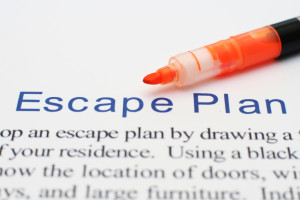Natural disasters are unpredictable and can occur without warning. Does your family have a PRACTICED safety plan? It is very important to be prepared, to ensure the safety of your family.
 Make a family safety plan
Make a family safety plan
When preparing a natural disaster safety plan, you want to include your whole family.
- Children – Children need to know what to do if there is a tornado or flood. Drawing pictures for younger children to show them where to gather is a great way to help them. Practice tornado drills and flood drills with them. It is a good idea to have an out-of-town contact person that each member can call if they can’t get a hold of you.
- Elderly Roommates – Make sure that they know the family’s gathering spot. If they have trouble walking, and they spend time at home alone, make sure they have a safe place on the first floor of the home. If they can’t walk down the stairs alone, it’s not a good idea to send them there in an emergency. You may have to reinforce an interior room for their safety. Have extra medicines or medical equipment in the safe room.
- For Pets – find a place you can take them and have crates on hand. Natural disasters scare animals, and they may run for safety. Be sure your animals have GPS tracking devices so you can find them. Also, have extra food in a Ziploc bag or some other waterproof container.
Each family member should have an emergency backpack and good tennis shoes. Always keep a first aid kit available with medical supplies like band aids, gauze, antiseptic, aspirin or ibuprofen and water. Also keep a flashlight, batteries and a battery operated radio in an easy to find place.
Tornado safety tips – Make sure your family knows the warning signs for tornadoes:
- Hail
- dark and greenish skies
- low-lying clouds that are dark and may be rotating
- Loud sounds similar to a large freight train
- Find out if your community has any public warning signs like sirens or a local radio station.
If a tornado hits when you are inside:
- Stay low.
- Go to an interior room like a closet or hallway on the first floor or in a basement.
- Stay away from windows.
If you are outside:
- Drive to the nearest sturdy building or shelter.
- Avoid bridges and overpasses.
- If you can’t locate a safety shelter, these are your last resort options:
- Find a noticeable lower than roadway level point, exit your car and lie in that area, covering your head with your hands.
- If it’s flat terrain, stay in your car with your seat belt on. Put your head lower than the windows and cover yourself with a blanket if possible.
Families who practice good safety advice, are more likely to be safe in a natural disaster. For the safety of your family, please take some time to prepare and practice.














